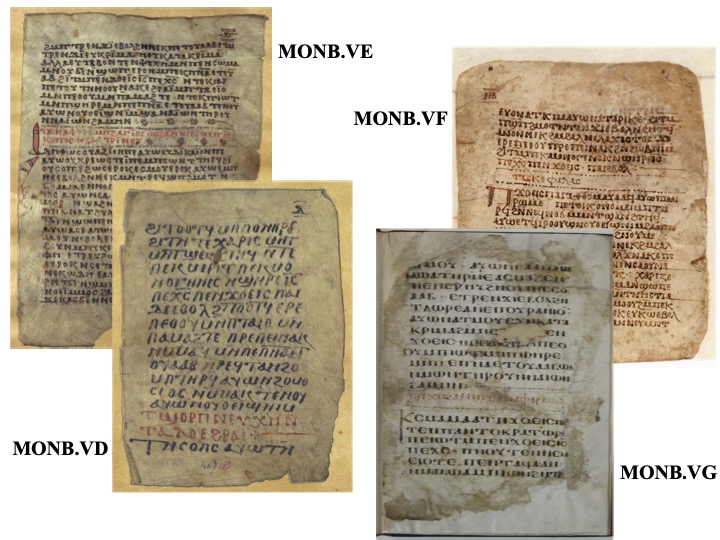The Sahidic Euchologion Tradition
The idea to start a Sahidic Euchologia project was born after Diliana Atanassova received an enquiry from Professor Harald Buchinger in spring 2020 regarding the existence of a fragmentary Coptic version of the Anaphora of St James in the so-called “Lanne’s Great Euchologion”. The occasion was a planned conference entitled “The Liturgy of St James”. The symposium took place in June 2022 after an initial online meeting in 2021. In preparing her contribution at the time, Diliana Atanassova set up, with the assistance of Lina Elhage-Mensching, a digital project entitled “Sahidic Euchologia” that has been officially online since 2022 in the Göttingen Virtual Manuscript Reading Room, also known as the Göttingen VMR. There, they use the sigla of the database Corpus dei Manoscritti Copti Letterari (= CMCL, now part of the PATh) to designate the four codices. There, they recorded not only Lanne’s Great Euchologion but also the three other known fragmentary Euchologia from the White Monastery by means of the photographs of each page together with their diplomatic editions. This enabled them to edit, carefully study, and compare these Euchologia with each other. In 2023, Agnes Mihálykó Tothne joined the team.
The four Euchologia MONB.VD, MONB.VE, MONB.VF, MONB.VG, represent priestly texts for the liturgy of the White Monastery in the period from the 7th/8th to the 11th century. The dating of the textual witnesses and the variety of the surviving liturgical forms refer to the period before the reform of Patriarch Gabriel II ibn Turaik of Alexandria (1131-1145). During this reform, the selection of pericopes was reduced and simplified and the number of liturgical formularies was significantly shortened and standardised. After this reform, the many anaphora from the Euchologia discussed here were reduced to just three formularies: the Anaphora of Basil of Caesarea († 379), the Anaphora of Gregory of Nazianzus († 399) and the Anaphora of Cyril of Alexandria († 444).
The production of the two codices with a larger number of surviving leaves follows the usual quaternion structure for parchment manuscripts, which either began with a flyleaf (MONB.VE) or did not have any flyleaves at all (MONB.VF). Both patterns are common in biblical and liturgical Sahidic manuscripts. Although the pagination scheme started according to one or the other pattern was not always maintained until the completion of the codex, as irregularities in the page numbering could occur again and again due to scribal errors or other unknown objective reasons, MONB.VF shows no recognisable errors of this kind and MONB.VE apparently only one. The digital project “Sahidic Euchologia” in the Göttingen VMR allows all four Euchologia to be further edited and analysed.
For more details, see Atanassova, Diliana / Elhage-Mensching, Lina (2023). Die sahidischen Euchologia des Weißen Klosters – eine kodikologische Bilanz, in: Diliana Atanassova, Frank Feder, Heike Sternberg el-Hotabi (eds), Pharaonen, Mönche und Gelehrte. Auf dem Pilgerweg durch 5000 Jahre ägyptische Geschichte über drei Kontinente. Heike Behlmer zum 65. Geburtstag, TSCB 4. Wiesbaden: Harrassowitz.


